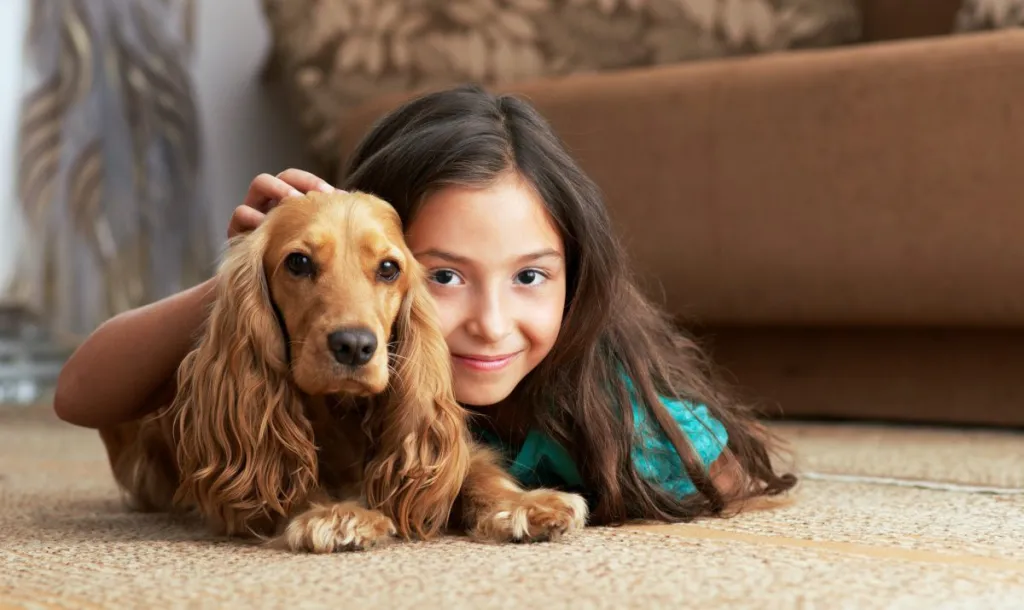Introducing a dog into your family can be one of the most rewarding and enriching decisions you’ll ever make, especially if you have kids. Dogs are not just pets; they become part of the family, providing unparalleled companionship, love, and even lessons in responsibility for your children. However, not all dog breeds are suitable for the chaotic, loud, and often unpredictable environment a family with kids can present. Therefore, it’s crucial to choose a breed that aligns with your family’s lifestyle, energy levels, and needs. Below, we’ve rounded up the best dog breeds known for their compatibility with kids and families, making your search a little easier.
What is the best dog breed for kids?
Golden Retrievers have long stood as the ultimate dog breed for kids, and it’s easy to see why. Known for their patient, friendly nature, and intelligence, Golden Retrievers make exceptional family pets. These dogs thrive on companionship and are exceedingly loyal. Plus, their eagerness to please makes them highly trainable. With their soft mouth, a Golden Retriever can play fetch with your children without any risk of an overly nippy interaction. However, they do require regular exercise to keep their jovial spirit in check. So, if your family enjoys backyard games or nature hikes, a Golden Retriever will fit right in.
What dog breeds are good with kids?
Labrador Retriever
If you’re looking for a dog who embodies the spirit of family life, the Labrador Retriever is hard to beat. Labs are famously friendly, outgoing, and high-spirited canines who have more than enough affection to go around for a family looking for a medium-to-large dog. Their patience and gentle demeanor make them fantastic playmates for your kids. What’s more, they are intelligent and trainable, meaning you’ll have an easier time teaching them the rules of the house.
Beagle
Beagles are another fantastic choice for families, especially due to their size and sturdy build. These dogs are adventurous and never tire of playing, which can be perfect for keeping up with energetic children. They’re also incredibly friendly and get along well with other pets. It’s worth noting, Beagles are known for their distinctive bark and howl, but with proper training, they can learn to use their voices judiciously. Additionally, owing to their strong sense of smell, they may be prone to wandering off if they catch an intriguing scent. Therefore, it’s important to have a securely fenced yard or keep them on a leash during outdoor adventures.
Boxer
Other factors to consider before bringing a dog home
Getting a dog is a huge responsibility — especially if you are already caring for children. Here are a few more things to keep in mind as a parent adopting a dog:
Size and strength: Opt for a dog that is compatible with the size and strength of young children. Large or strong breeds might unintentionally knock over or overpower small kids during play, leading to accidental injuries.
Temperament: Evaluate the dog’s temperament thoroughly before adoption. An ideal family dog should be patient, gentle, and tolerant, especially when dealing with the exuberance of young children.
Training and socialization: Prioritize adopting a dog that has undergone proper training and socialization. A well-trained dog is more likely to interact positively with children and respond to commands, creating a safer environment.
Health and veterinary care: Ensure the dog is in good health and up-to-date with vaccinations before bringing them home. Regular veterinary check-ups are vital to monitor the dog’s health and protect both the pet and the children.
Adjustment Period: Allow time (up to three months) for the dog and the children to adapt to each other’s presence. Gradual introductions and respecting the dog’s space will foster a positive relationship.
Family involvement: Involve all family members in caring for the dog, including feeding, walking, and playtime. Sharing responsibilities promotes bonding and helps the dog feel integrated into the family unit.
Preparing your home: Prepare your home for the new dog’s arrival. Remove any hazardous items, provide a designated space for the dog, and establish rules for interactions with the children.
Beyond these factors and figuring out the best dog breeds for kids, however, are bigger questions. Perhaps the most fundamental question to ask yourself is, “Do I personally have the time to train a dog and supervise them around my children?” If the answer is no, you might want to wait until your kids are older (many recommend age 5 or up) before bringing a dog home.









